Seiji McCarthy bespoke shoes: East Meets East
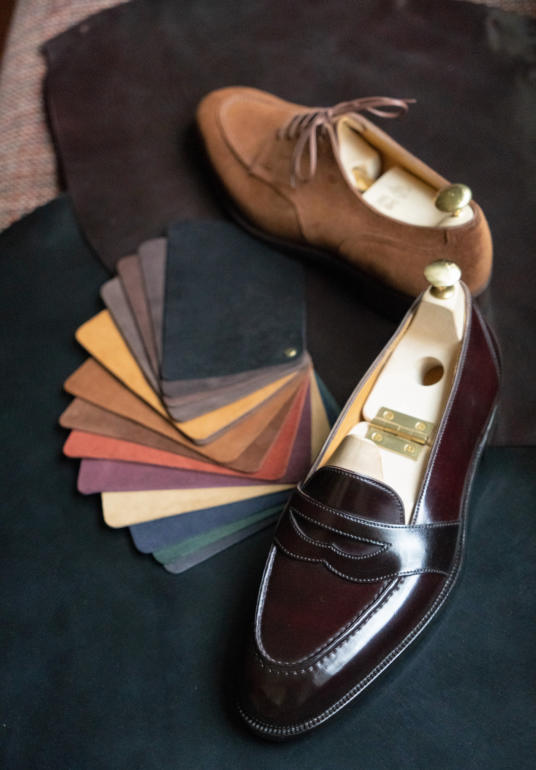
Seiji McCarthy is someone I've wanted to cover on PS ever since we hung out in Tokyo some six years ago. But with no prospect of travelling to Japan soon, I turned to local writer and friend Christopher Berry to visit Seiji and report - on Seiji's American style and MTO process in particular.
By Christopher Berry
I recently had the pleasure of visiting Seiji McCarthy, one of Tokyo’s most interesting new bespoke shoemakers. I say new, but actually he’s been in Japan for five years, assiduously honing his craft and building a brand. He just tends to keep rather a low profile.
Seiji first lived here in his twenties, both to master the language and to re-connect with his roots (he is half Japanese, on his mother’s side). Back in the US, he pursued a career with the NBA (that’s the National Basketball Association), which took him all over America and Asia. But then he returned a few years ago to pursue shoemaking.
Somehow, Seiji has managed to make a name for himself in a country renowned for its master shoemakers. Some might have called the move foolhardy, given the country already seems to be bursting with names. But I think this is to misunderstand the local culture. Whether it be in shoes, suits or watches, whenever a new player enters the arena, everyone pays due attention - and often the bar ends up being raised for everyone.
When Seiji started he shared part of the upper floor of World Footwear Gallery, in the Harajuku district of Tokyo. But today he is in a new atelier - a discreet ivy-clad building around the corner, a stone’s throw away from Bryceland’s - and frankly it is a joy to see him thriving in his own space.
After settling into the jazz café-themed workshop, Seiji explains to me his new made-to-order service. This is quicker and less expensive, and presents a high level of value to those who want bespoke quality, but have fairly regular feet.
The fitting process is inherently an additive one. First, clients are guided into their best-fitting trial shoe. Then, corrections to the pre-made form are made as necessary. For each altered location on the last, an additional charge of ¥5,000 (£30) is added.
This process can also be done remotely, but is only recommended for people that can fit into a standard sized last of a commonly known brand. For example, one could tell Seiji they were a 9.5 in, say, Alden and select a style and leather. The shoe would then be made in one shot with zero fittings, according to the customer’s appropriate size based on those discussions.
There is one final option, where a trial shoe is sent as part of this remote MTO service, for an extra ¥70,000. For those who are travel-restricted, these options all work well, to good customer satisfaction. However, Seiji always advocates in-person fittings when possible.
Bespoke is inevitably where things get more interesting.
While Seiji’s shoes are as far from a factory product as possible, he places a heavy emphasis on factory-like levels of consistency: “I like to take as much guesswork out as possible. If I have a gauge that shows me how your foot looks, I can imagine it in 3D so much better."
While European shoemakers typically favour simple tape measurements and foot tracings, many in Japan and Asia use more involved fitting processes, replete with plastic shoes, pressure sensors and even plaster moulds. These devices can provide a 1:1 anatomical reference in the absence of the customer’s foot, but in Seiji’s view don’t always guarantee better results.
In his experience, topographical cross sections of the foot using a gauge are extremely useful for achieving a good fit, on top of tracings and measures. Although as in many areas of craft, ultimately the proper decision about which tools to use is up to the artisan, and which they find delivers the best results to their customers.
It’s also useful to note that ‘well-fitting’ shoes are considered differently here in Japan than abroad.
For example, people take off their shoes with more frequency, and no one wants to garner even the slightest negative attention from peers or superiors by spending too much time lacing or unlacing their footwear at professional functions. Consequently, Japanese people typically wear shoes about a half size too large, and sometimes more.
Here, people prefer to jump in and out of their shoes in a flash, so that the gears of society may continue to turn uninterrupted.
Seiji and I agreed these societal and workplace norms are also the reason why men in Asia tend towards a more elongated shoe. Convincing customers to break with this visual bias has not always been easy. But, with much of the world becoming less formal the tides seem to be finally turning, and Seiji is enjoying the opportunity to cultivate and educate customers during this cultural shift.
There is also a parallel with Seiji’s own journey, from idolizing super-slim London shoes to the more American-oriented styles he prefers today.
“When I started as a bespoke maker I wanted to make the George Cleverly Churchill-style chiseled toe. But the style I’ve developed since living here is a lot less chiseled and a lot more round,” he says.
“Today the most popular shoes we sell are still brogues and dress shoes, because Japanese guys typically wear more dress shoes. But whereas in the past I’d sell a brogue with a super chiseled toe, now we do things much more rounded. Now I’ll push people into grain leathers or suede, or I’ll suggest people try cordovan, which instantly gives that bulky, waxy feel.”
It’s interesting to hear this, as cordovan is notoriously one of the more difficult leathers to work with. With shell, especially on the heel and toe areas, Seiji likens getting a clean pull over the last to “hog wrestling.”
And even suede skins are harder, because they have to be kept spotless throughout the (physically demanding) making process. “The materials I recommend the most are some of the toughest to work with as a maker, but I don’t mind. I enjoy the challenge. I love the feel and look of those materials for myself and for my customers,” he says.
While many will associate cordovan with ready-made shoes, you could argue its sought-after properties are actually better suited to bespoke in some ways.
On a bespoke last the material adapts more readily to the foot and gives in all the right places from the first step. Ready-made cordovan by contrast can be harder to break in, and the pain lingers in our memory (and sometimes feet) for years.
The author personally wears a size EEE in Alden and can attest to this phenomenon. A lot of it also has to do with age. As we get older, our feet spread out or can become misshapen by years of ill-fitting shoes, causing further injury.
Seiji’s range includes both English and American styles, but it’s the creation of an elevated, more refined version of the latter that arguably sets him apart from other makers. This casual elegance really seems to put the shoes into a more versatile category of bespoke, approachable by a wider variety of customers.
It’s a style heritage he and I have in common, having both spend time at school in Philadelphia. “Wide leg chinos and button-down shirts - if you’re from the East Coast, we get born in these things, you know? Penny loafers, khakis, rugby shirts and jackets.”
Practicality is also at the centre of the appeal, for him: “I’m probably at the age now [46] where I don’t want to even ride the subway anymore. I mean I will, but there’s a focus on quality of life stuff. I really prefer walking or commuting by bike.
“I like shoes, but I don’t want to have my toenails split. I want a pair that is comfortable and that I can keep for 20 years. You don’t really expect 20-year-olds to show up in bespoke shoes. But I’m at an age now where it makes more sense.”
There’s little surprise that his East Coast beginnings greatly inform the type of clothes Seiji pairs with his shoes. With that in mind, it will also come as little surprise to readers that his workshop is so close to Bryceland’s, the menswear store run by Ethan Newton.
“Ethan really influenced my style to the point that if I hadn’t met him, I think I might still be making British-style shoes. He got me into vintage. I think of him almost like a Rick Rubin. He supports artisans in a way that is ridiculous,” says Seiji.
“The style I’ve developed since living here in Japan is a lot closer to my heritage and a lot more based on daily life. In the end you get back to who you are.”
Seiji is planning international trunk shows in the future. Stay tuned to this space and Seiji’s Instagram for updates.
Prices in JPY as of September 8 2022:
MTO:
- Price: ¥200,000 (£1225, plus ¥5,000 per last adjustment)
- Lead Time: 3-4 months
- Fittings: 1
Bespoke:
- Price: ¥400,000 (£2450)
- Lead Time: 1 Year
- Fittings: As necessary


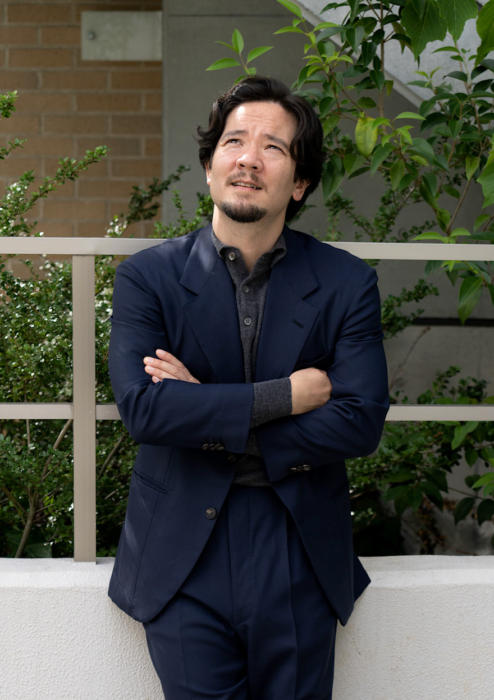
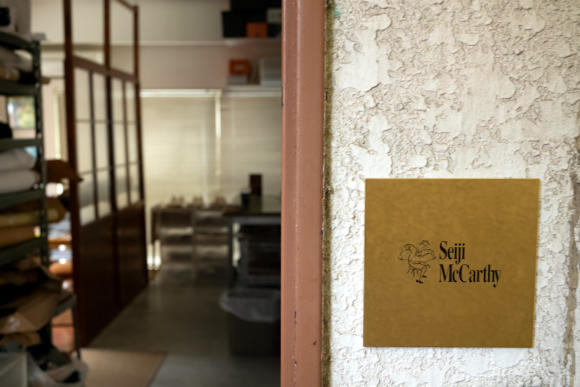
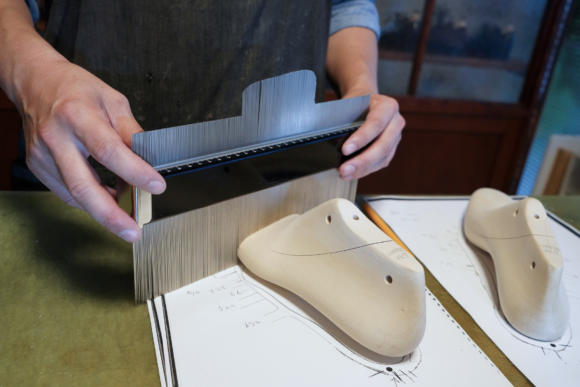
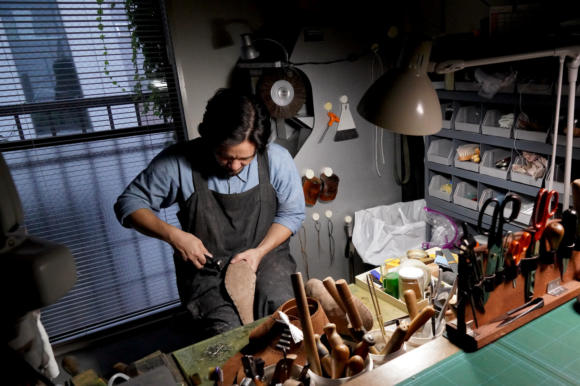
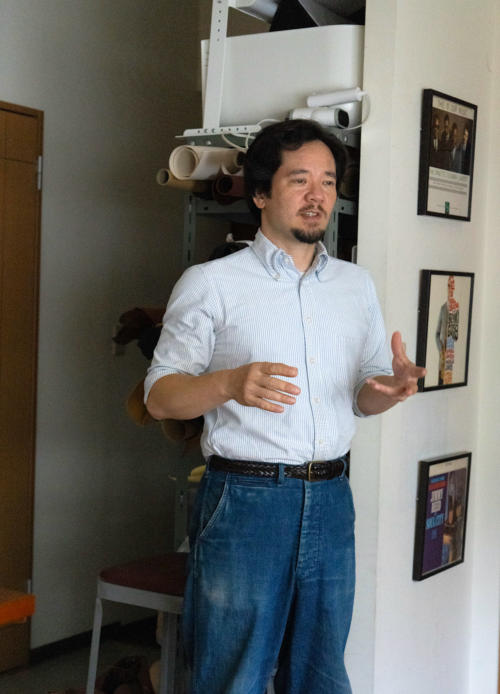
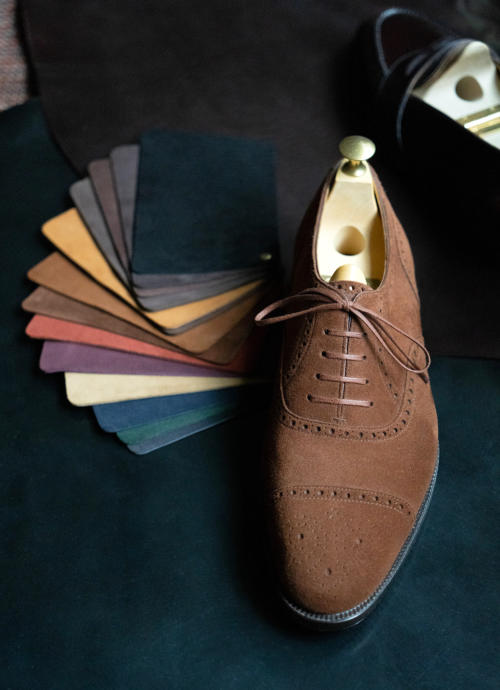
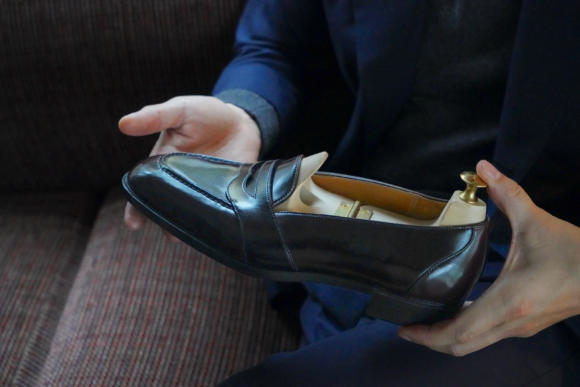
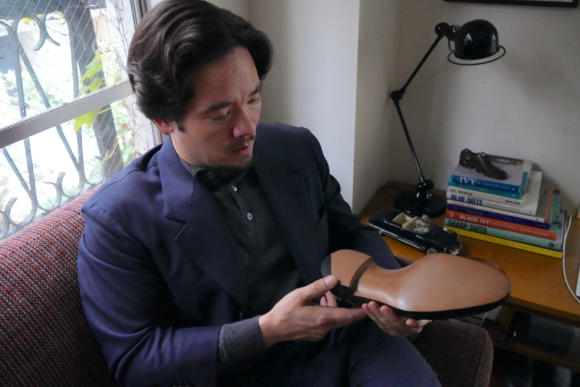
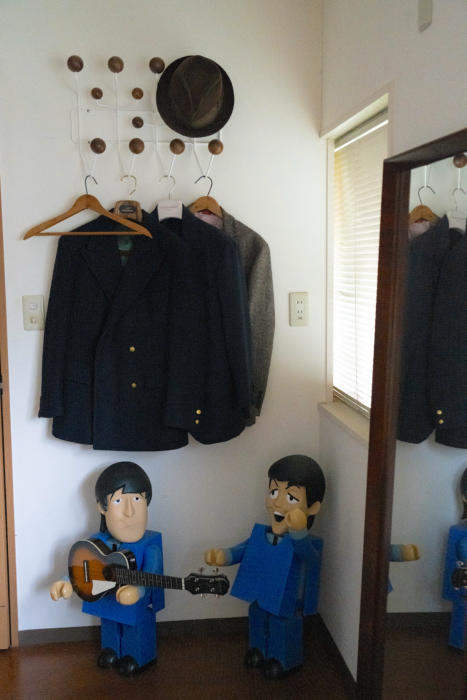
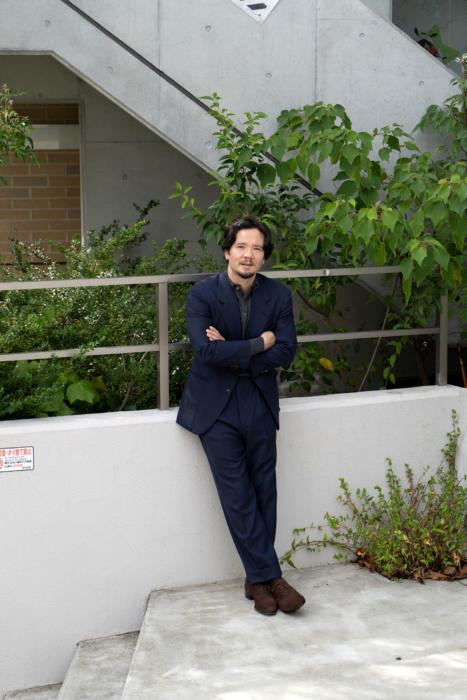


























Thanks for this interesting article. I especially appreciate photo showing the gauge which captures topographical shape of foot— a clever invention!
Yes it’s interesting, I’ve seen a couple of bespoke makers start to use that technique recently. I think there’s more international awareness now of how other people work, and so more techniques in common
Great article, beautiful shoes and inspirational style with the braided belt, oxford shirt and jeans.
Thank you! Glad you enjoyed it!
hi simon I’m usually not into bespoke as the shoes tend to be too sleek/sharpish but the cordovan one in the first picture is a beauty. I’m just wondering though as a casual lover of shoes who can get by in fit from rtw shoes and who doesn’t need or like very formal shoes (I prefer round toes one like alden loafers), when does one consider getting MTO (with adjustments made as in the article) or bespoke? Does bespoke really mean a much more comfortable fit and does it really warrant such a big price jump from rtw?
It will often be a better fit, but I think you have to appreciate the quality and craft to make it worth it.
See my post ‘Are bespoke shoes worth it?’ for more on that
There does seem to be a wider trend now towards bulkier and rougher. As opposed to the trend towards skinny that had previously lasted my whole adult life so far. Hearing about Seiji’s pivot towards more casual materials and more rounded shoes reminded me of that.
What a staggering coincidence that an article opening with a lament about not being able to go to Japan is published the same day they’ve announced their re-opening!
I’d love to head over and talk to Seiji about some bulky shell-cordovan loafers. And the MTO price looks quite reasonable.
On the price Matt, bear in mind the yen is at a big low at the moment – compared to the pound it’s cheap, and even more so against the dollar. A few years ago that price would have been 20% higher
That’s fair. Although I think that in the hours since you wrote this reply it’s become much less of a bargain.
True!
Great article. Craftsman profiles are a personal favourite. Off topic, but who make his suit?
Good question – I’ll ask
According to this instgram: dalcuore
Thanks. Perhaps through Bryceland’s in that case
Dalcuore by Brycelands!
While searching for more content about Seiji Mccarthy I found this…
Someone just blatantly stole your content!
https://notishorts.com/east-meets-east-everlasting-model/?amp=1
Yeah that happens now and again.
Your attitude regarding this matter is inspiring. Thanks.
I’m always fascinated by the Japanese approach to aesthetics, craft and minute detail.
The Japanese seem to pursue these with a passion that others can’t match.
I remember watching a programme on NHK about a Japanese engine who specialised in screw threads. I was glued to the TV for 60 minutes !
P.S.
On a different note I noticed a beautiful ‘bicycle’ jacket on window display at the Boggi store on Jermyn Street.
Simon, have you ever had a bicycle jacket made ?
I don’t recall you ever writing about one … … surprisingly as I known your a cyclist
Completely agree. Have you seen the piece we did on Sasuke the scissor maker? Some of the traditions there were nuts.
On cycling jackets, no I used to wear hybrid ones, like those Everest was making at one point, but they were never that satisfactory. Most of the time and now I only wear proper cycling clothing – and change when I get to the office/workspace
Simon may i ask something ? I love the loafer look like you do but i have huge difficulties to find something that fits me well. I have pretty narrow feet and most brands are either too wide and slip out or too small. Which brands from your experience are more on the tight fit- not too wide side ?
To be honest Georgios, I’ve never found a brand that really does that in a way that makes a difference. I accept a little heel slippage, which as we discussed here re Alden’s modified last, feels like the better side of the compromise.
It is an issue that makers have consistently though – I was talking to Tony Gaziano recently about this, and he said he estimates about one fifth of customers have that issue with loafers. Almost enough to make it worth having a different loafer last that could be used in MTO – same at the front, but tighter on the heel
Yes i have read that the time you posted it but i was too busy to ask. Actually i have tried most good brands like c&j edward green alden and all have similar issues. The unlined lines have more room to play though. This year i plan to buy the unlined eg you designed( i asked you 2-3 months ago) and give it a try. In some models it helps really a lot to try a new insole that brings you 0,5 size closer if we say you buy a little bigger to not compromise on the comfort but the slipping. The key there is to find the perfect one for you cause all are to me good but the thickness differs. At the time i wear 3-4 times a week a cheap pair that costed 200 euro and has really the best fit for my foot but doesnt have the above quality is not resolable etc. without trees( i didnt want to order a new set for something i wasnt sure ill try and changing in between is for me too much work) the are now on their 8 month and look really nice. If you are interested ill check later and tell you the name of the brand.
Thank you, please do
The brand is called boden but the model is not available.
https://www.google.de/search?q=boden+loafer+men&client=safari&hl=de-de&prmd=sivn&source=lnms&tbm=isch&sa=X&ved=2ahUKEwjmp-nygLP6AhVIh_0HHXyICzoQ_AUoAnoECAEQAg&biw=375&bih=553&dpr=2#imgrc=AGQMuoustCIyUM Thats the one i have. The quality is way above from what you usually wear but the fit is one of the best i had in loafers.
Just wanted to share how much enjoyed your writing, Christopher. No frills, not trying to impress an attitude, not trying to affect with a voice. Just a joy to read. And worthy of Seiji, who is a superb craftsman.
Cheers,
Miles
Chris, I wear an 11.5 EEE from Allen Edmonds. I have conflicting advice on trying a pair of cordovan tassel loafers from Alden or AE. May I have your advice on the matter?
Hi Tom,
11.5 EEE is is quite the size. I feel your pain!
Objectively, AE is the more comfortable shoe straight out of the box. They use softer interlinings and weigh a bit less. However, Alden is the better-made shoe, and the originator of the tassel-loafer style.
I personally don’t care for the overall styling and amount of ‘sole spring’ that AE builds into it’s shoes. And not just for aesthetic reasons: https://news.harvard.edu/gazette/story/2020/09/curve-on-shoes-makes-walking-easier-but-may-lead-to-foot-problems/
Highly questionable health benefits aside, overly curved soles also never look quite right against a nice trouser hem. Aldens have the most classic proportions in this style and age with much more grace. For these reasons I’ve bought Alden my entire adult life.
I’d also admit I’m at a point in life where I have low tolerance for any type of persistent foot pain and would probably hold off on ready to wear, favoring bespoke where possible. There is no substitute for it.
For those of us in the EEE Brotherhood, alas, neither brand offers a perfect solution but of course your mileage may vary. I do still love my Aldens!
I hope this helps inform your choice!
All The Best,
Christopher
Hi Christopher,
A brief comment delayed due to a technological issue. Thank you so much for this post: a very interesting one well beyond introducing Seiji McCarthy, obviously a great shoemaker, to PS readers!
I’ve really enjoyed reading it!
John
Cheers, John. Thanks for reading. It was a pleasure diving into Seiji’s work after watching his business grow over the last few years here.
More to come!
All The Best,
Christopher
Hi Simon, would you think this more refined take on the ivy penny loafer could be worn with jeans? Best, Jan
Yes, absolutely
Hi Simon, I have been looking for a slightly more refined version of the Alden no 8 cordovan penny loafer. Slightly finer in style and make, but still casual enough to wear with jeans, chinos, and corduroy. Seiji‘s loafer in this post looked nice. Alternatively I was thinking about the following model from St Crispin‘s
https://michaeljondral.com/de-ch/products/limited-edition-loafer-american-casual-penny-aus-original-horween-shell-cordovan-reine-handarbeit
Any thoughts on those? Thought the slim waist might bend the style a bit too much and there is a risk it might result in a slightly odd mix of styles? Am a bit on the fence, thoughts highly welcome 😉
Yes I’m not sure about that style, Jan. It’s a little unusual, I’d have to see it in person.
I’d go for Seiji’s or for the Alden it’s inspired by – the full strap on the Aberdeen last like mine
I didn’t realize you spent time in Philly!
You realise this wasn’t written by me (Simon), right Kinte?